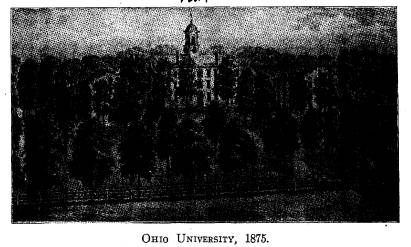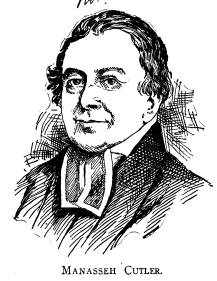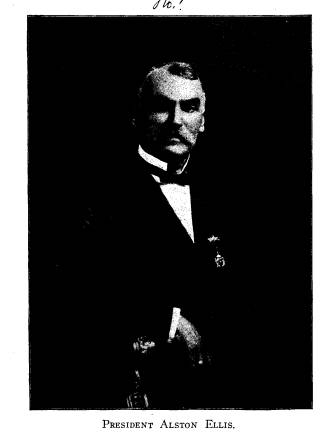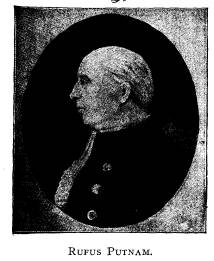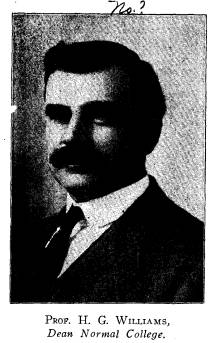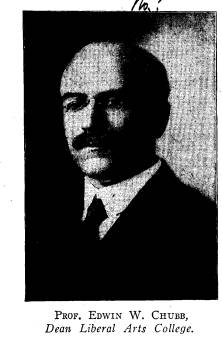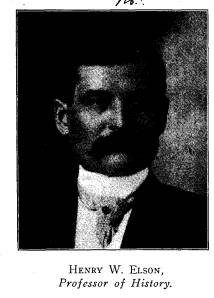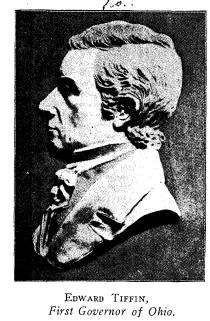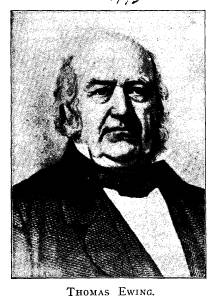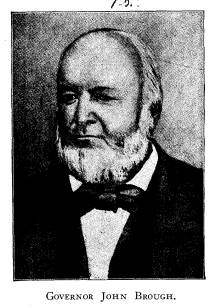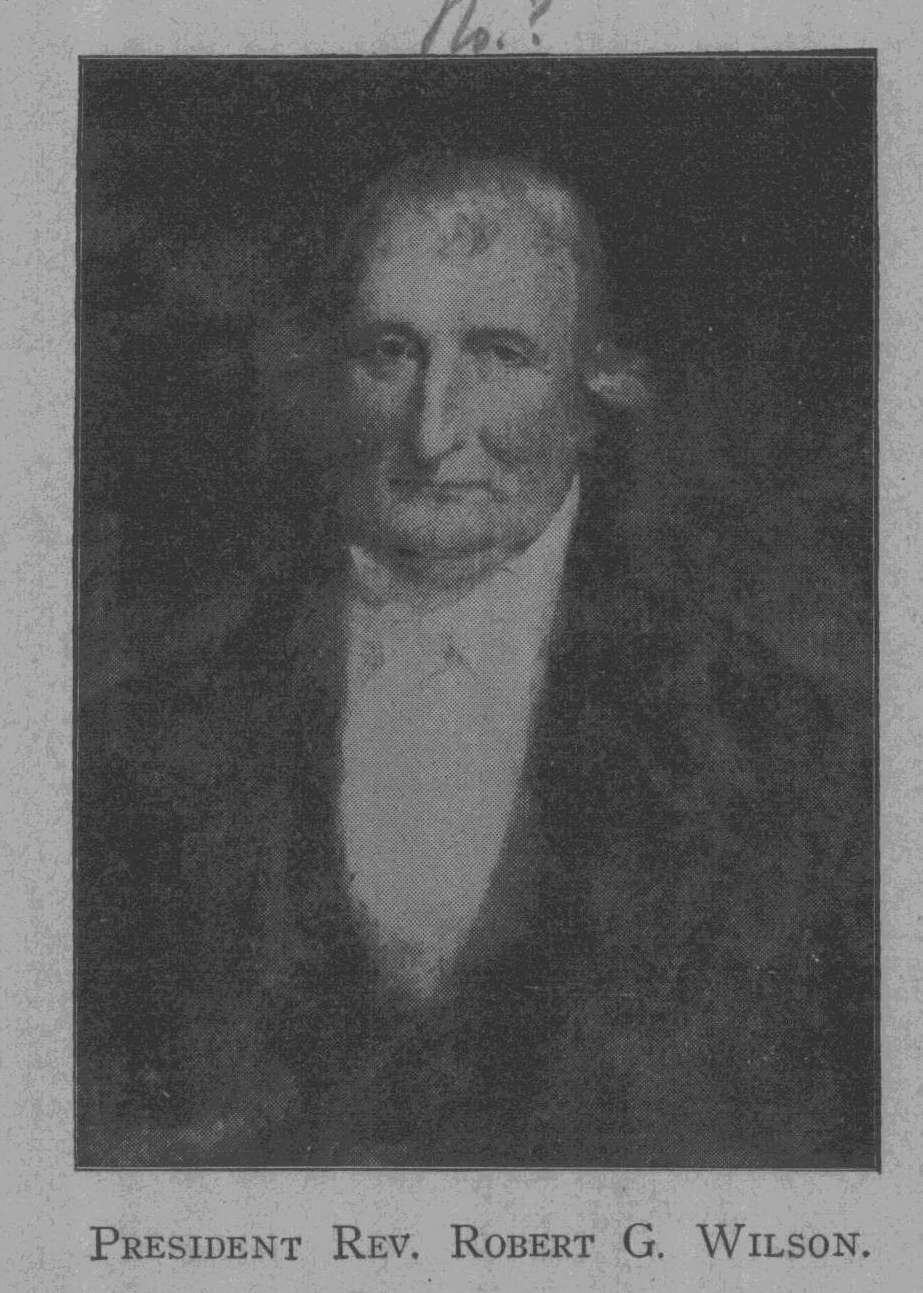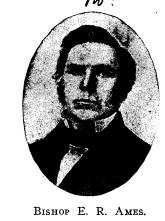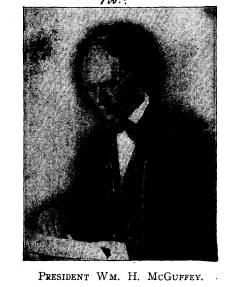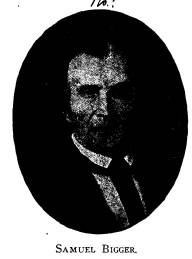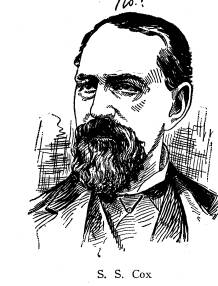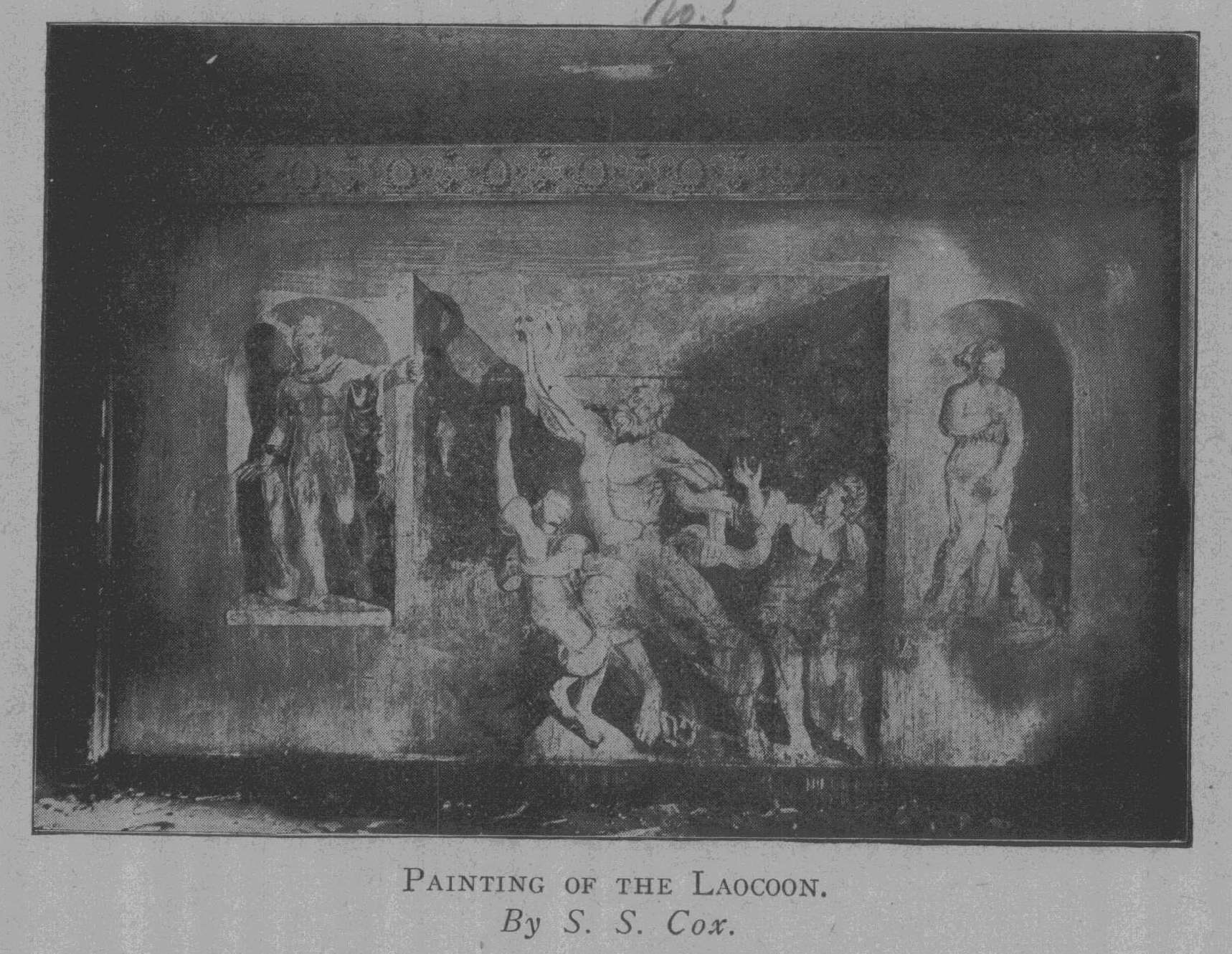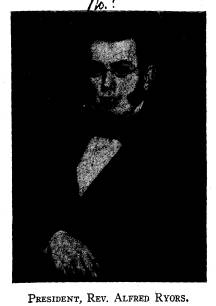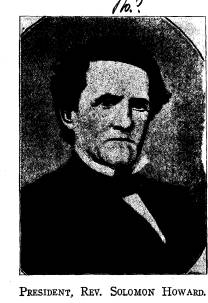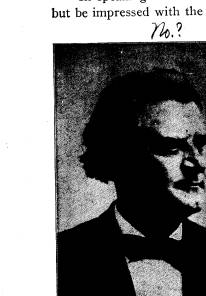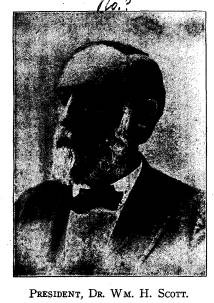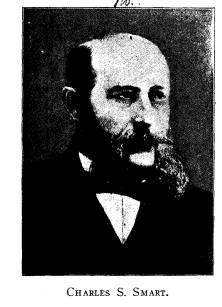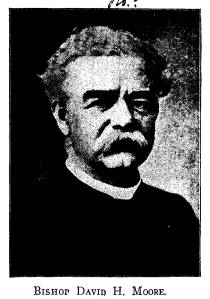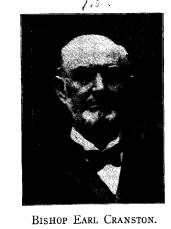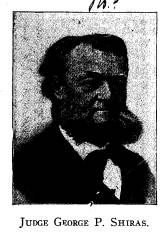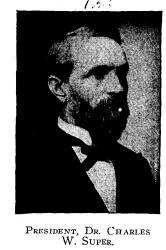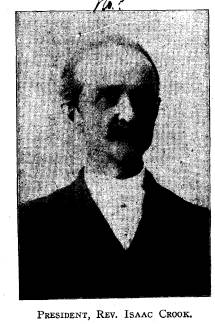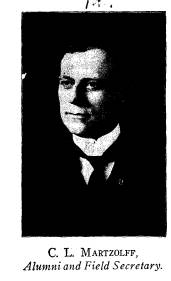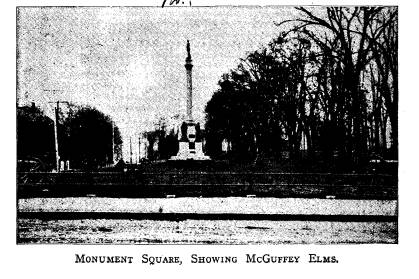Ohio History Journal
|
OHIO UNIVERSITY-THE HISTORIC COLLEGE OF THE OLD NORTHWEST.
CLEMENT L. MARTZOLFF.
Situated on the winding Hock-Hocking amid the pic- turesque hills of Southern Ohio is the little city which, according to Theodore Roosevelt, "with queer poverty of imagination and fatuous absence of humor has been given the name of Athens." |
|
|
|
Probably the strenuous ex-president would have considered it more appropriate to have named it "Hog-Hollow" or "Buz- zards' Glory" or some such euphonious title instead. In justi- fication of its name it must be remembered that the settlers sent out by the Ohio Company of Associates had a greater per cent. of Harvard and Yale graduates than any similar body of pioneers in America. So when these men christened Ma- rietta, Athens, Campus Martius, Rome, Troy, and Carthage it was not because of paucity of imagination but rather out of (411) |
|
412 Ohio Arch. and Hist. Society Publications.
their abundance of knowledge. The humor of the situation may never have struck them, for they were Englishmen. But the desire to build well was theirs. So they laid the foundation deep and broad. The settlement began under the "reign of law" and with it was the establishment by law of the church, the school, and the college. The fathers of Ohio may have lacked imagination and they may not have been able to see a joke but neither were they renegades, squatters, bush-whackers, nor scalp hunters. This alone ought to neutralize their |
|
|
|
The Ohio University had its inception along with the Ordinance of 1787. This makes it the oldest collegiate insti- tution northwest of the Ohio river and as Dr. Manasseh Cutler was the moving spirit in the settlement of this first west and the establishment of organic law there, so too can we look to him as the "Father of Ohio University". By his constructive statesmanship and his consummate diplomacy, he succeeded in getting a dying congress to do in two weeks what it had failed to accomplish in three years-the establishment of a govern- ment for the Northwest Territory. He was instrumental in having placed in the famous ordinance the now oft-quoted |
Ohio University. 413
"religion, morality, and
knowledge" doctrine. Two weeks later
he had completed his negotiations for
the purchase of land for
the Ohio Company of Associates. He
insisted that there should
be a donation of land within the
purchase for the endowment
of a university. The amount demanded was
two townships.
Congress hesitated, whereupon Dr. Cutler
at once went to his
room and began to pack his belongings,
preparatory for de-
parture. The negotiations were all off
as far as he was con-
cerned. Massachusetts would sell him
land, up in what is
now Maine. This brought the committee to
time. The bargain
was struck. Congress ordered the Board
of Treasury to enter
into a contract.
"Not more than two complete
townships to be given per-
petually for the purposes of an
university, to be laid off by
the purchaser or purchasers, as near the
center as may be (so
that the same shall be of good land) to
be applied to the in-
tended object by the Legislature of the
state (July 23, 1787)."
The Ohio University for which the above
recommendations
were made thus becomes the recipient of
the first endowment
of land for higher education by the
National Government. It is
true that this idea of Congressional
endowments did not originate
with Dr. Cutler.
In June, 1783, Colonel Bland, a Delegate
in Congress from
Virginia, in a resolution touching
Western Lands, had pro-
posed to utilize the income of certain
of the lands for "founding
seminaries of learning." In the
same year Timothy Pickering
had given utterance to a similar idea.
As no immediate results came from these
proposals they
are only interesting and important in
showing the trend of
opinion of the times. The credit of
working out the details
and the honor of securing the
"college grant" belong without
doubt to Dr. Cutler.
A further concession was demanded in the
letter of the
Ohio Company to the Board of Treasury,
under date of July
26, 1787. The land was taken in parcels
and to be paid for
in installments. In the event that some
parts might not be
taken up there might be some question as
to the location of
|
414 Ohio Arch. and Hist. Society Publications. the college lands and even if they should be entitled to them or not; whereupon the Company of Associates requested: "The lands assigned for the establishment of an university to be as nearly as possible in the center of the first million and a half of acres we shall pay for; for to fix it in the center |
|
|
|
of the proposed purchase might too long defer the establish- ment." This request was accepted for it was a feature in the con- tract between the Ohio Company of Associates and the Board of Treasury entered into October 27, 1787. |
Ohio University. 415
"And also reserving out of the said
tract so to be granted,
two complete townships to be given
perpetually for the pur-
poses of an university, to be laid off
by the said parties of the
second part, their heirs or assigns, as
near the center as may
be, so the same shall be of good land to
be applied to the in-
tended object in such manner as the
Legislature of the state
wherein the said township shall fall, or
may be situated, shall
or may think proper to
direct." Patents for the lands
con-
tracted for were duly issued and work of
settlement was begun.
The settlement of the Northwest
Territory affords a unique
example in state building, when New England pioneers 750
miles away from where they were going to
make their homes,
in a wild and unbroken country, declare
that the establishment
of a higher institution of learning
shall be co-eval with the
establishment of civil law.
That the university was the essential
feature of the new
commonwealth and was used as a means of
influencing prospect-
ive settlers in the selection of their
homes is seen in a French
pamphlet, published in Paris, 1782. It was used
by the Scioto
Company to induce emigrants to come to
Ohio. The pamphlet
from
which the following is a
translation was brought to
America by one of the Gallipolis
pioneers.
"The measures which have been taken
by the act of Congress,
providing for the disposition of the
lands west of the Ohio as far
down as the Scioto for the establishment
and maintenance of schools,
and of a University shed an especial
lustre on these settlements
and inspire the hope that by the
particular attention which has been
given to education, the fields of
science will be extended, and that the
means of acquiring useful knowledge will
be placed on a more respectful
footing in this country than in any
other part of the world. Without
speaking of the advantages of
discovering in this new country species
hitherto unknown in natural history,
botany, and medical science, it cannot
be questioned that in no other part of
the habitable globe can there be
found a spot where, in order to begin
well, there will not be found
much evil to extirpate, bad customs to
combat, and ancient systems to
reform. Here there is no rubbish to
clear away before laying foun-
dations. The first commencement of this
settlement will be undertaker
by persons inspired with the noblest
sentiments, versed in the most
necessary branches of knowledge,
acquainted with the world and with
affairs, as well as with every branch of
science. If they shall be so for-
tunate as to have at first the means of
founding on an advantageous
|
416 Ohio Arch. and Hist. Society Publications.
plan these schools and this University, and of sustaining them in such a manner that the professors may be able to commence without delay the different labors to which they may be called, they will, in the infancy of the colony, have secured to themselves advantages which will be found nowhere else."
That was a great day, December 3, 1787, when there gathered in the streets of Ipswich, Mass., the colonists bound for the Ohio. The leader of this band of pioneers was Rufus Putnam, who is well-styled the "Father of Ohio." Four and |
|
|
|
He visited the settlement in the summer of 1788. We find in his diary of the date, September 3d, of that year, how he and Gen- eral Putnam had crossed the Muskingum to Fort Harmar and in company with Dr. Scott, they climbed "the high hill north-west of the Fort and west of the city. Fine prospect. Some excellent land; fine rock for building; and it is proposed that the univer- sity should be on this hill." There is now an interregnum of several years in which no definite steps are being taken for the establishment of the university. The Western country was in the midst of a des- perate Indian war. The Indian edict had gone forth that "no |
|
Ohio University. 417 white man shall plant corn in the Ohio country." A year after the Marietta settlement, Governor St. Clair had invited the Indians to a council at Fort Harmar. But the Miamis and Shawanese stayed away and the Confederated tribes did not sanction the treaty. Brant, the great chief of the Six Nations, was laboring to unite the western tribes into a Confederacy and |
|
|
|
escaped, from the terrible massacre at their very doors. The colony was put into a state of defense and while no depreda- tions again occurred within the Ohio Company's Purchase there were constant signs of alarm. St. Clair had met a terrible defeat and not until General Wayne had crushed the Indian power and consummated it at the Greenville Treaty did the colonists breathe easier. "The five years of bloodshed and military campaigns had a decided tendency to check the growth and development of the Vol. XIX. - 27. |
418 Ohio Arch. and
Hist. Society Publications.
Northwest Territory. The able bodied men
were taken from the
clearing and the fields. *
* * The women and chil-
dren, with the men who remained at home,
were paying more
attention to the block-houses and
stockades than to the corn-
fields. Governor St. Clair had
promulgated an order that 'the
practice of assembling for public
worship without arms may be
attended with the most serious and
melancholy consequences.'"
The period of the Indian wars was one of
fear and anxiety to
the settlers and we do not wonder that
they did not think of
their proposed university. But the
clouds of war had hardly
passed before they emerged from their
forts and took up the
work where it had left off. A
reconnoitering committee was ap-
pointed to locate the college lands.
General Putnam remained
the man in authority among the
colonists. As surveyor-general
he usually led all reconnoitering
expeditions. The records of
the Ohio Company show this entry:
"December 16, 1795.
"The reconnoitering committee
having reported that town-
ships number eight and nine in the
fourteenth range are most
central in the Ohio Company's purchase,
and it being fully
ascertained that the lands are of an
excellent quality.
"Resolved, Unanimously that the aforesaid townships num-
ber eight and nine in the fourteenth
range be reserved for the
benefit of an university, as expressed
in the original contract
with the Board of Treasury."
These townships were surveyed and
platted during the
years 1795-96 under the direct
supervision of Rufus Putnam,
"who from the first took an ardent
interest in the selection of
these lands and the founding of the
university. His policy
was to encourage the early settlement of
the college lands, make
them attractive and productive,
and so begin the formation of
a fund for the institution."
"These lands," says Ephraim
Cutler, "with a large sur-
rounding region, were the most
favorite portions of the hunt-
ing ground which the Indians had surrendered in their
several
treaties."
According to the same authority, the
Indians continued to
|
Ohio University. 419
return during the hunting season for many years thereafter. Four years later the Territorial legislature appointed a com- mittee with Rufus Putnam as its head to "lay off a town plat with a square for the college." "The committee was accom- panied by a surveyor, a number of assistants, and fifteen men to guard against a possible Indian attack. This was certainly a strange introduction of the classics into the Northwest. In a |
|
|
|
fleet of canoes, propelled by the power of the setting- pole against the swift and narrow channel of the Great Hock-Hocking, ac- companied by armed guards against the lurking savages and carrying with them pork, beans, and hard tack that made up their rough fare, the committee of old veterans of three wars pro- ceeded to fix with compass and chain the boundaries of the university lands. There was little of polish or cul- ture in the undertaking, but rifles, canoes, and salt pork were never put to better use. Such was the genesis of the Ohio University." In 1801, Judge Ephriam |
|
Cutler stated that the University lands then contained about nine hundred inhabitants. Still the countrywas a wilderness. The campus was covered with poplar trees and flocks of wild turkeys were frequent. Dr. Eliphaz Perkins, at whose home the Uni- versity trustees held their first meeting, took bear meat for his medical fees and he himself met bruin one day wandering over the campus inspecting the site of the proposed institution of higher learning. Although not on the ground, Dr. Cutler was still the prime mover in the establishment of the University. The |
|
420 Ohio Arch. and Hist. Society Publications.
correspondence between him and Rufus Putnam at this time shows the deep interest he felt in having the college start off right. In a letter dated February 3, 1799, General Putnam gives some data as to the condition of affairs: that the University townships (now Athens and Alexander in Athens county) con- tain the best land in the whole of the Ohio Company's Purchase; that settlers mostly of the New England stock are rapidly fill- ing them up; that a militia has been organized; that none of the settlers expect to occupy the land rent free for more than five |
|
|
|
plan so "liberal and extensive as I think ought to be the foun- dation of the Constitution of this University." The educational institutions of this country, however, offered to him more, and he finally modeled it after Harvard and Yale, more particularly the latter, of which he was an alumnus. Upon receipt of this letter General Putnam again wrote to his friend asking for some definite plan. "We are totally destitute of any copy of an in- corporating act, or charter of a college or even an academy. I want you to make one out in detail, or procure it done for |
Ohio University. 421
us, and forward it by mail as soon as it
is ready." In response
Dr. Cutler prepared and forwarded to
General Putnam a Char-
ter of University, accompanied by a letter
discussing the vari-
ous articles of the instrument. The
University was to be called
the American University since the
"sound was natural, easy, and
agreeable." He then discussed the
government of the institu-
tion which he admitted was not exactly
what he had wanted, but
the best he could offer under the
circumstances. The rental of the
college lands seemed to give him
considerable anxiety and
properly so, as the later history of the
University amply shows. As
to buildings, it would be necessary, in
the first instance, to open
a Latin school, for "I conceive it
improbable that any youths
can be found in the country qualified
for admission as the stud-
ents of the college." "I am
under the greatest obligations to you
for the attention you have paid to the
subject," writes General
Putnam, in reply, "and if it should
not in all respects meet the
approbation of our legislature, it must
be of very great advantage
to them in forming an opinion."
This charter with sundry amendments was
duly passed by
the Territorial legislature and approved
by Arthur St. Clair, as
Governor, January 9, 1802. General
Putnam was authorized
to call a meeting of the corporation.
Nothing, however, was
done in the matter. The political
excitement of the year doubt-
less had much to do with the negligence.
Ohio was trying to get
into the Union and this topic was
uppermost in the minds of
everyone and absorbing every other
interest. The first legis-
lature of the new state provided for the
appraisement of the
college lands, which was done during the
summer of 1803. The
following year another act allowed the
appraisers compensation
for their services, at the rate of $1.43
per day. On the 18th of
February, 1804, the
legislature passed another act "establishing
an university in the town of
Athens," differing in some respects
from the Act of 1802. The corporate name
was changed to the
Ohio University. The corporation was to consist of the gov-
ernor of the state and the president of
the faculty and a body of
trustees. The act named the trustees and
authorized the gov-
ernor to call the first meeting.
Thereupon Governor Tiffin set
|
422 Ohio Arch. and Hist. Society Publications.
the date for Monday, June 4, 1804, and notified the following gentlemen of their appointment: Judge Elijah Backus, General Rufus Putnam, Judge Dudley Woodbridge, Rev. Daniel Story, Rev. James Kilbourne, and Samuel Carpenter. In obedience to the call, they met at the home of Dr. Eliphaz Perkins, who lived grandly in a double log house built of yellow poplar trees, neatly squared. It was two stories high and large |
|
|
|
Samuel Carpenter came from Lancaster, Rev. James Kil- bourne from Worthington beyond Columbus, and Rufus Putnam from Marietta. The roads were only trails and there were but occasional pioneer huts to cheer the traveler. In going across the cliffs and following along winding streams the lone travelers passed the haunts of the bear, the wolf, and the panther. It seems incongruous, "These men had traveled fifty to one hundred miles, by blind paths or Indian trails through dense forests inhabited by wild animals, to this embryo village, |
Ohio University. 423
for the purpose of establishing an
institution of learning."
(Walker's History of Athens County.)
It may be well to glance at the
personnel of the board to
learn what manner of men these were.
Governor Tiffin and
Rufus Putnam are so well known that to
mention their names
is all that is necessary. Judge Backus
was a graduate of Yale
as was also Judge Woodridge. The Rev.
Daniel Story was a
graduate of Dartmouth. Rev. James
Kilbourne was the first
settler at Worthington, Ohio. Dr.
Perkins, while not a trustee
of the University but very influential
in its establishment, was
likewise a Yale graduate. It is
interesting to note that five of
these men were college graduates.
"This first session of the board
lasted three days and was
principally spent in arranging for the
appraisal and leasing of
the college lands. Since the surveying
of these townships in
1795, numbers of new settlers had come
in and occupied the
lands. Some of these were rough and
determined characters,
and were bent on maintaining possession.
To adjust these cases,
settle disputed titles, etc., required
patience, tact, and wisdom.
The parties had either to be mollified
and induced to come to
terms, or be ejected from their lands.
The first business of
the board was to adjust the claims of
conflicting parties, secure
titles, and protect the corporation in
its rights." (Walker's His-
tory of Athens County.)
Governor Tiffin in his message to the
Legislature, December
4, 1804, called attention to what had been done and
recommended
a more liberal policy to the lessees of
the land, in order to in-
duce more rapid settlement that the
institution might be im-
mediately profited. The legislature
responded with an act pro-
viding for the appraisement of the lands
at not less than $1.75
per acre and the leasing of them for a
period of ninety-nine
years, renewable forever. The second
meeting of the board
of trustees was called for November 20, 1805, but no
quorum
present, they adjourned. The third
meeting was held April
2, 1806. The long intervals between the sessions of the
board
were spent in surveying and leasing
lands and in collecting
rents. The trials of this period were
many. Squatters had to
be ejected. Money was scarce and rents
were hard to collect.
|
424 Ohio Arch. and Hist. Society Publications.
At the meeting of 1806 it was decided that sufficient money had been collected to construct a house. Before the close of the year, plans were accepted, and contracts were let. The building was two stories high, twenty by thirty feet, built of brick, and stood on the east side of the campus. March 2, 1808, the Rev. Jacob Lindley, Dr. Perkins, and Rufus Putnam were appointed a committee to report a system "for opening the. academy, providing a preceptor, and conduct- ing that branch of the Ohio University." The course of study |
|
|
|
seen the farmers bringing in the produce. As there were no scales in the town a committee of citizens was appointed to adjust dif- ferences between the lessee and the treasurer, should they not agree about the weight of the merchandise." It might be in- teresting to note who some of the trustees were in these early days of the infant college. A glance suffices to show many names of able men, noted for their ability and wise counsel. Among these might be mentioned Judge Silvanus Ames; Dr. Leonard Jewett, a graduate of the Boston Medical College; |
Ohio University. 425
Judge Elijah Hatch, for nine terms a
state representative; Hon.
Charles R. Sherman, father of John
Sherman and General W.
T. Sherman; Governor. Thomas
Worthington; Dr. S. P. Hil-
dreth; Rev. James Hoge; Hon. Thomas
Ewing; and Hon. Cal-
vary Morris.
During these beginning years the growth
was necessarily
slow, but the college grew steadily in
favor with the citizenship
of the state. Globes, books, and
apparatus were purchased and
the attendance was very gratifying. In
1810 the laws of Prince-
ton were adopted as the governing code
and a course of study
was formulated upon the completion of
which the student was
to receive the degree of bachelor of
arts. The curriculum
adopted compared favorably with the best
eastern schools. In
those strenuous days the trustees would
meet for deliberation
at five o'clock in the morning. The
students would assemble
for morning prayers at sunrise.
It was in December, 1809, that Thomas
Ewing came to the
Ohio University after his appetite for
knowledge had been
whetted to a keen edge by the now famous
"Coon-Skin Library."
He had just returned from the Kanawha
Salines where he had
earned enough money to keep him in
school for three months
"by way of testing my capacity. I
left in the spring with a
sufficiently high opinion of myself, and
returned to Kanawha
to earn money to complete my education.
I went to Kanawha
the third year, and after a severe
summer's labor I returned
home with about six hundred dollars in
money, but sick and ex-
hausted. Instead, however, of sending
for a physician, I got
Don Quixote, a recent purchase, from the
library, and laughed
myself well in about ten days. I then
went to Athens, entered
as a regular student, and continued my
studies there till the
spring of 1815 when I left, a pretty
good though an irregular
scholar."
May 3, 1815, the committee appointed by
the board of
trustees, to examine Thomas Ewing and
John Hunter, candi-
dates for a degree of bachelor of arts
and sciences, beg leave
to report:
"That they have examined the
applicants aforesaid in the
different branches, * * * * and that
they have witnessed
|
426 Ohio Arch. and Hist. Society Publications.
with much gratification the proficiency made by the before-named students. * * * * "That the said Thomas Ewing and John Hunter merit the approbation of the board of trustees, and that they are each entitled to a degree of bachelor of arts and sciences." Then followed the first Commencement exercises in the Northwest Territory, at which Hunter gave the salutatory and Ewing the valedictory. Hunter died the next year; fifteen years later Ewing was in the United States Senate. |
|
|
|
assistant had been employed. Six years later, Joseph Dana, a Dartmouth graduate, began the teaching of languages. Three years more Rev. James Irvine, a graduate of Union College, took the chair of mathematics. A principal was selected for the academy and a librarian employed. Later Professor Irvine was elected the President of the University but ill health prevented him from entering upon his duties and Rev. Dr. Robert G. Wil- son, a Presbyterian clergyman, of Chillicothe, Ohio, was the wise choice of the trustees. Dr. Wilson was a South Carolinian |
|
Ohio University. 427
by birth. As a boy he had known John C. Calhoun, had re- ceived his academic education in the same academy in which Andrew Jackson had been educated, and had graduated with James Buchanan at Dickinson College. Princeton University had conferred upon him the doctorate. He was inaugurated to the presidency of the University August 11, 1824. The cere- mony occurred beneath a bower of green leaves erected upon the college green. In one end of the bower was a high seat; to this place of honor he was escorted by Governor Jeremiah |
|
|
|
fidence. That the merciful God, who has hitherto been pleased to smile on the efforts to disseminate light and know- ledge, may aid and support in the arduous duties this day as- signed you will be the fervent prayer of the trustees." The beginning of Dr. Wilson's incumbency of the Presi- dency marks the beginning of a new era of the University. From this period may be dated its complete working system and large usefulness. Literary societies were in full blast; the nuclei of three libraries had been formed and a museum begun. The |
|
428 Ohio Arch. and Hist. Society Publications.
pecuniary embarrassments of the institution had been overcome, without resorting to the lottery, that had been contem- plated and for which the state legislature had given its sanction in 1817. A new building, the finest of its kind, a new president, and a strong faculty, with a rapidly growing new country, all conspired to make the town of Athens an educational mecca for this western country. The Ohio University for twenty years took precedence over many other colleges. From the time Thomas Ewing went forth as one of the two first graduates, the college maintained a standard of excellence second to none in the country. At the trustees' meeting held April 17, 1823, |
|
|
|
sented in the student body. The Reed boys came from a farm near Urbana, a distance of one hundred and fifty miles. There were in the family seven boys and the father desiring to give them the best educational advantages within reach, selected the Ohio University. But their help was needed in both the spring and the fall on the farm, so they had to journey back and forth at these seasons. The journey was made in a two-horse carriage and it took three days to make the trip each way. The father took his boys back and forth one-hundred and twenty times. In all he traveled eighteen thousand miles or a distance equal to three-fourths around the globe. Of course it paid. Daniel, the eldest, who graduated in 1824, was for years a member of the |
|
Ohio University. 429
faculty of his Alma Mater. Then he became a college president. Three became successful lawyers and one of these a Judge of the Supreme Court of Ohio. Two became physicians and the seventh was shot while commanding a vessel in running the blockade in the Mississippi during the Civil War. John T. Brazee arrived in Athens July 5, 1819, after walking sixty miles from Chillicothe. Graduating in the class of 1824, he became a member of the Lancaster bar, which at that time boasted of such legal lights as Ewing, Stanbery, and Hocking H. Hunter, and where he took first rank among his colleagues. Here, too, came Samuel Bigger, who became Governor of In- |
|
|
|
Canadian rebellion of 1838. Among the noted divines who passed out of the University in these days, Bishop Ames and Lorenzo Dow McCabe of the Methodist Church are worthy of mention. These, too, are the days of "rough" John Brough of Marietta who "stuck" type for a living, kicked the foot-ball over Center Building for recreation. fell in love with his wife as an avocation, and at the same time succeeded in laying the educational foundation for his subsequent political career that finally made him one of the "War Gov- ernors" of Ohio. This period of development continued without abatement reaching its high water mark in the days of the great William |
|
430 Ohio Arch. and Hist. Society Publications.
H. McGuffey, who succeeded President Wilson in 1839. The future of the college never seemed so bright.. Two additional buildings known as the "East Wing" and the "West Wing" were completed in 1837 and 1839 respectively. The name of McGuffey was a household word in the western country and he drew students to him in great numbers. It was during his term that the magnificent row of elms facing the campus was planted, which are still known as the "McGuffey Elms". The time for the re-appraisal of the college lands was drawing near, which |
|
|
|
less credit of the state legislature that it should have been in col- lusion to defraud the University of its patrimony. These days ushered in the "Dark Ages" of the University. It is not a pleasant chapter to write and no friend of the Ohio University can read it without a feeling that Governor Tiffin acted unwisely in opening a loop-hole through which the holders of the lands might get the ear of the legislature, that, in the language of James A. Garfield, acted with "an unfortunate exer- cise of power without right." This adverse legislation was enacted March 1O, 1843. In 1861 the trustees of the University |
|
Ohio University. 431
petitioned the legislature for relief and a Senate Committee, of which Mr. Garfield was Chairman, made a finding in favor of the memorialists and in so doing reviewed fully but briefly the entire series of litigation and legislation. To make it clear there is no better method than to quote in part from this report. "From the earliest legislation on this subject, it seems to have been the well settled opinion of the representatives of the Territorial and State Legislatures, and of all other parties in interest, that these two townships should, according to the intent of the grantor, be perpetually held by the state, as |
|
|
|
thirty-five, sixty, and ninety years, and with the like rent of six per cent. upon such new valuations to be paid by the lease-hold- ers. And in the nature of an immunity to the lease-holders, in reference to the first and all subsequent appraisements, and with a view to increased rents to inure to the University by rendering the lands more valuable and desirable to the occupants, it was provided that the lands with the buildings which may be erected thereon shall forever be exempted from all state taxes." "This act, in its main and essential features, has remained in force until the act of March 10, 1843, (which) provides in |
|
432 Ohio Arch. and Hist. Society Publications.
substance that all the lands aforesaid should be forever exempt from any and all appraisement. The language of it is peculiar." "Previous to this adverse legislation the lessees brought a suit in chancery in the Supreme Court of this state enjoining the Ohio University from re-appraising said lands. The Court unan- imously decided in favor of the defendants." "Upon investigation of the subject, your committee have become well satisfied that the memorialists have presented a fair case, entitling them to redress at the hands of the legislature |
|
|
|
ulty resigned, students began to leave, and President McGuffey, sick at heart, resigned. For two years longer the struggle continued under the direction of a faculty committee and then, in 1845, this old college closed its doors, until such time, three years it was estimated, the accumulation of the small revenue might liquidate the debts. This was unfortunate in more ways than one. It lost the Ohio University some distinguished Alumni, from among the strong men who had been attracted thither by President McGuffey, and who now were compelled to go else- where. Among these might be mentioned the famous "Sun- |
|
Ohio University. 433
set" Cox who had come over from Zanesville. His room was in the Northwest corner of the second floor of the "West Wing". Here until a few years ago when in repairing the building it was necessary to remove it, could be seen on the south wall his celebrated painting of the Laocoon Group which for nearly sixty years was the silent reminder that "Sun- set" Cox could paint with the brush as well as with words. The college was again opened for the reception of students |
|
|
|
September 14, 1848, but few appeared. Things had to start all over again. There was no graduating class until two years later and for several years thereafter the classes were small. The Rev. Alfred Ryors, a graduate of Jefferson College, became the President. He served but four years when he resigned, to be succeeded by Rev. Solomon Howard, a graduate of Augusta College, Kentucky. The following extract from a letter written several years ago to General Charles H. Grosvenor further illustrates the Vol. XIX. - 28. |
|
434 Ohio Arch. and Hist. Society Publications. position of Ohio University at this time. It was written by Theodore W. Tallmadge of Washington City, since deceased. Mr. Tallmadge was a Freshman at the University during the col- lege year, 1842-43. It was the last year of William H. McGuffey as President. On account of the action of the Ohio Legislature, in denying the re-appraisement of college lands, it was supposed that the college would suspend immediately, so the students went elsewhere. Mr. Tallmadge went to Princeton, "Sunset" |
|
|
|
held by the community. The public literary entertainments, gen- erally had in the Presbyterian Church, were of a high order. ** * * We generally had exercises by the Literary Societies of the College at the termination of the winter session, just before the spring vacation. In addition were the Commencement exercises at the end of the scholastic year; often the students would celebrate the Fourth-of-July by proper exer- cises; several of them delivering orations and the Declaration of Independence being read. Many of these students that were my |
|
Ohio University. 435
companions at that time have become very conspicuous and influential citizens, not only in the State of Ohio, but in other states. Among them I might mention John B. Hoge of Rich- mond, Virginia; Converse Goddard of Zanesville, Ohio; R. Pat- terson Effinger of Lancaster, Ohio; Lorenzo D. McCabe and Dr. Silva of Chillicothe. About twenty per cent. of the students were from other states and at that time the Ohio University was patronized very generally by Virginians, as there was no competing university in that state. |
|
|
|
"You would probably not be interested in any description of college scrapes during my experience at the University. I will mention some however. At one time some of us of Whig proclivities, who were at a meeting in one of the nearby villages at which the anticipated orator did not make his appearance, pointed out Samuel Sullivan Cox of Zanesville, one of my class- mates, as a good speaker that would interest the audience and he made a very acceptable speech." Dr. Howard remained at the head of the University for |
|
436 Ohio Arch. and Hist. Society Publications.
twenty years and during his administration the school regained much of its former prestige and continued to send out some splendid men. While it was handicapped ever for money yet it did its work in a modest, effective way, proving that there are some things besides buildings and endowments in the mak- ing of a college. |
|
|
|
JUDGE OLIVER PERRY SHIRAS. Joseph C. Corbin, the Afro- American who became State Superintendent of Education in Arkansas, Judge Hindman of West Virginia, Hugh Boyd, the teacher, Charles S. Smart, later Ohio School Commissioner, Prof. Glenn Adney, Bishops David H. Moore and Earl Cranson of the Methodist Church, William H. Scott, afterward President of his alma mater and also of the Ohio State University, John W. Dowd, William S. Eversole, and William D. Lash, prominent Ohio School Superintendents, Judge John L. McMaster, of Indiana, Prof. Russell S. Devol, of Ken- yon, Thomas C. Iliff, the distinguished missionary to the Mor- |
|
Ohio University. 437
M. Davis of Rio Grande college, and scores of others. The years immediately succeeding the Civil War were especially noted for a large student body. Many of the students had laid aside their books to go to the front and others who had seen service in the army now felt the need of college training and took advan- tage of the free tuition offered to ex-soldiers at Ohio University. These men were of a more mature mind than the ordinary under- graduates and while they were "back" in many of their scholastic |
|
|
|
place if it were not for the "co-eds." The circumstances are as follows: Mr. Hugh Boyd, of Athens, was desirous that his sister, Margaret, should have a college education, but the "ladies' seminaries" of that time being below what he considered their standard should be, he and Professor Adney discussed the mat- ter, and the latter decided to take his friend's sister as a pupil. It was known, however, that there existed a strong feeling against women attending the same college as men, a prejudice not confined to the towns-people, but the faculty as well, and it |
|
438 Ohio Arch. and Hist. Society Publications.
was thought that if formal application were made, it would almost certainly be refused. Miss Boyd accordingly took a part of a term privately for preparation, then entered the Senior grade Preparatory as a "private pupil." In the catalogue of that year, 1868, her name is entered simply as "M. Boyd." But the next year the catalogue stated "Miss Boyd." The second woman stu- dent was Miss Boyd's niece, Miss Ella Boyd. Such was the be- ginning of co-education at Ohio University. Dr. Howard was succeeded in the Presidency of the Uni- |
|
|
|
of office was spent in litigation and appealing to the legislature for redress, that resulted in reclaiming a part of the institution's lawful income. Great credit is due this loyal son of the Ohio University for his fearlessness and firmness in championing her interests. He left it finally in what, it is affirmed, he thought to be a moribund condition. But he builded better than he knew. He planted the seeds of a new life. His administration marks the Renaissance of the Ohio University. It was the beginning of a policy that opened the way for a newer day to the pioneer |
|
Ohio University. 439
college and which to a great extent fulfills the ambition of its founder. Closely associated with President Scott in this contest was George Washington Boyce, of Cincinnati, who had graduated at the Ohio University in 1867. We will allow Dr. Scott to de- scribe what took place. "In 1873 Mr. Boyce was elected a member of the House of Representatives of Ohio. He appreciated the honor which the office conferred and sought to perform all its obligations efficient- |
|
|
|
clear: The lands belonged to the University by an act of Congress passed before the state had an existence, and the state that was to be was made the trustee for the organization of the University and the administration of its affairs. In the act establishing the University the state had empowered it to collect a certain rent and an additional rent equal to the state taxes, and she had herself re- frained from collecting any tax from the lands as long as they remained under lease. She thus acknowledged her relations to be that of a trustee, a relation which forbids the holder to |
|
440 Ohio Arch. and Hist. Society Publications.
derive any profit from the trust which he administers. There- fore, in collecting taxes on such of the lands of the University as had been changed from a lease hold title to a title in fee simple, the state had violated her obligation as a trustee. The force of this reasoning was recognized by the General Assembly, and the bill passed March 25, 1875. "But the argument was double-edged. We were met with the question, 'Why does not the University collect the equal amount to which it is entitled on those of its lands which still remain under lease?' To this no answer could be given, except that it never had been collected and that the trustees of the |
|
|
|
Meetings were held, petitions were circulated, and delegations were sent to Columbus to work for its defeat. Mr. Boyce was besieged by argument and appeal and occasional threat. He received it all with hearty good nature, but stood like a rock. Indeed, the opposition only roused him to greater zeal. Fully convinced of the justice of the measure, and fully determined that the University in its need should receive what was so clearly its due, he fairly glowed with enthusiasm. His popu- larity with his fellow-members, his unremitting labor, and his intense earnestness were the chief factors in the result. The |
|
Ohio University. 441
bill became a law March 30, 1875, and was known thereafter as the 'Boyce Law.' "These two measures added about $3000.00 to the annual revenues of the University. In the existing condition of the institution this sum was of itself no mean consideration; but it was worth far more as a legislative fact, for it opened the way for other and far greater sums. "Encouraged by these successes, some of the friends of the University obtained from the board of trustees a reluctant con- sent to ask for a direct appropriation from the state; and in 1880 a bill was introduced appropriating $20,000.00 for the re- |
|
|
|
eagerness and abandon as Mr. Boyce. He was ready at every call. He gave his time without stint. He took advantage of his privileges as a former member of the House, and of his acquaintance with former members and with the members from Cincinnati to press the interests of the University. He ex- tended his acquaintance among the members in order to win more votes. He headed off opposition. His vigilance, his ardor, his courage, his unflagging perseverance made his single presence a host. "This bill passed the House in the Spring of 1880; but de- fbre it came to a vote in the Senate, the General Assembly ad- |
|
442 Ohio Arch. and Hist. Society Publications.
journed. During the adjourned session, however, March 21, 1881, it was passed by the Senate in the face of determined op- position and by a bare majority. When the long contest was over and we were at last assured of success, Mr. Boyce was jubilant. I think I never saw a happier man." President Scott was succeeded by Dr. Charles W. Super, a graduate of Dickinson College. The administration of Presi- dent Super may well be considered as marking the "newer" Ohio University. Dr. Super saw a future for the institution. The entering wedge toward legislative help began to yield re- sults. The Alumni roll also grew apace. The legislature to make amends for half a century of neglect began to make direct appropriations for its support. It has already been noted that in 1881 the sum of $20,000 had been appropriated for the repair of buildings. Two years later another sum of $10,000 was voted for the same purpose. The following year $5,000 for general support was set aside. The year 1886 indicates still another |
|
|
|
were voted for the erection of Ewing Hall, now the administra- tion building. This same year President Super was succeeded by Dr. Isaac Crook, who managed the affairs of the institution until 1898. Dr. Super again took charge of the institution and in 1901 |
|
Ohio University. 443
gave way to Dr. Alston Ellis, who retains the position at this time. The administration of President Ellis has marked a new and distinct era in the life of the Ohio University. It ushered in the Greater Ohio University. President Ellis with his long experience as a public school and college man has made a dis- tinct impression on the policy of the institution, in the way of new and better things. This decade has witnessed the expendi ture of more money by the State of Ohio on this pioneer col- lege than in the whole century of its history. In 1900 there were five buildings on the campus. Now there are twelve. Then there was a faculty of twenty-two, now there are sixty- seven. Then there was a yearly enrollment of four hundred students, now there is one of fifteen hundred. The whole amount expended by the state in the way of permanent im- |
|
|
|
ordinate than there is to say that a law school or agricultural college can not be connected within the same university. The Normal College of Ohio University was established by |
|
444 Ohio Arch. and Hist. Society Publications.
statute March 12, 1902. The state levies by taxation one and one-half one hundredths of one mill upon every dollar of taxable property of the state for its support. This yields about thirty- three thousand dollars annually. The law that has meant more to the Ohio University is the one passed April 1906, in which the State of Ohio, outlined its policy regarding the institution. It placed it among the wards of the state and thus retrieved it- self for the years of neglect. No friend of the old college has any reason to complain of the recent action of the state. The state as trustee is doing well by its ward and the college is doing well by the people of the state. Today its work is more nearly akin to what its founders wished it to be than ever before. Its field of usefulness is found in its College of Liberal Arts, the State Normal College, the College of Music, the School of Commerce, the Electrical and Civil Engineering Departments, and the State Preparatory School. |
|
|
|
college is the big thing. Social life centers about the campus. The citizens of the town are interested in their historical old school, and as a result the students are invited into the best |
|
Ohio University. 445
homes. There are no saloons and the college authorities, the faculty, students, and their friends helped to bring this about. This, in brief, is the story of the pioneer college of the central west. We have seen its origin, a gift from the national government, its growth, and its period of the "dark ages." But it has had its renaissance. So that in 1904, when its centennial was celebrated, its sons and daughters from the East and the West, the North and South, and even from beyond the seas gath- ered beneath the "old beech" that was standing when the bell first rang for classes at the opening of the last century. Here, too, they gazed at the row of seventeen elms planted by the hands of the great McGuffey, and wandered through the cor- ridors of the old buildings that had sheltered them, and thou- sads of others through the lapse of the century, and all stood beneath the trees and sang the praises of "Old O. U." |
|
|
